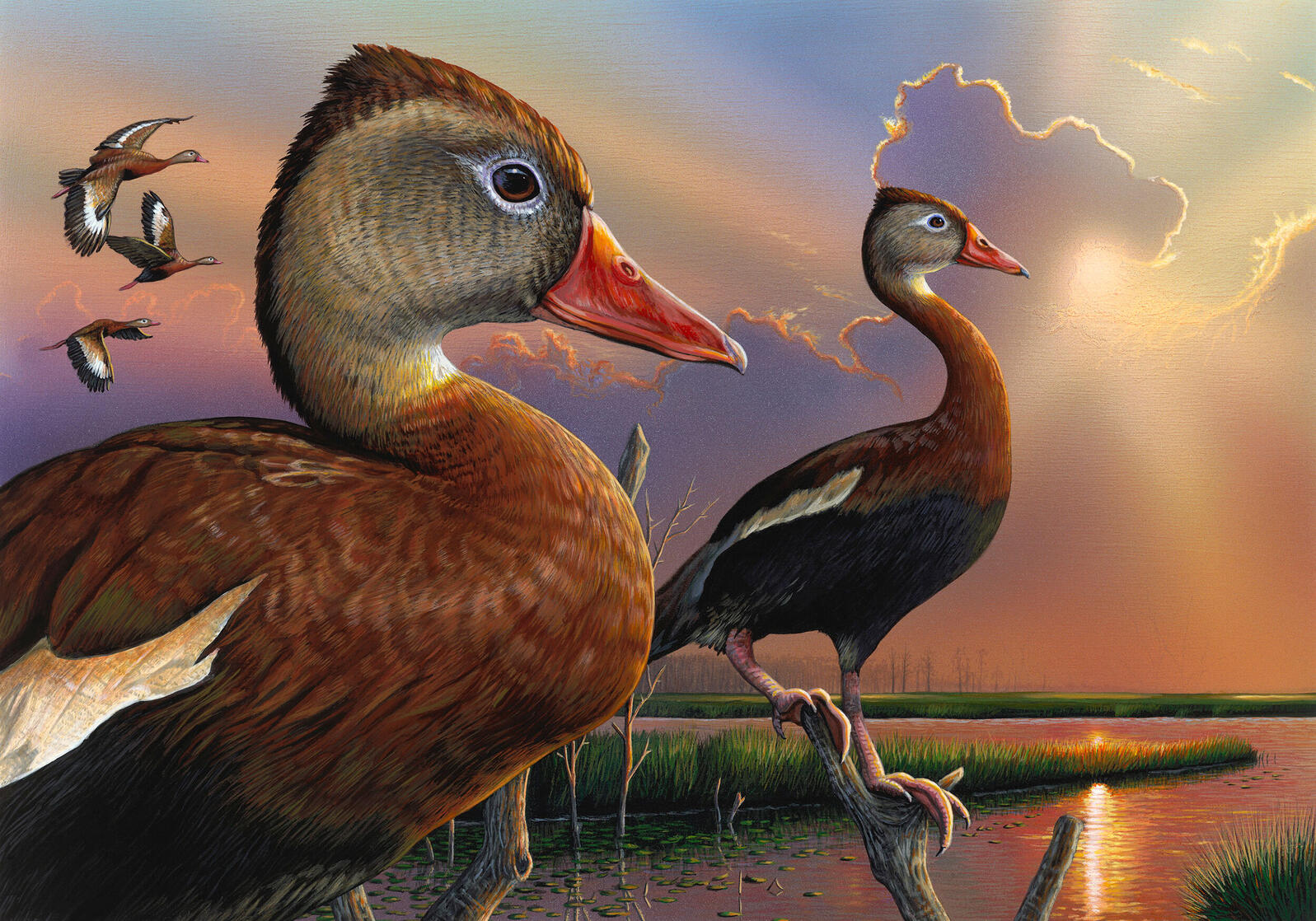
Hunters are crying “fowl” over a proposed change to a $25 stamp they’re required to purchase from the U.S. government as part of their official waterfowl hunting licenses.
Under a new rule proposed under President Joe Biden, the Duck Stamp would no longer need to include an imagistic reference to hunting, which was introduced as a requirement under President Donald Trump.
“Many… artists have continued to express their dissatisfaction with this [hunting] element being a requirement for all entries,” the U.S. Fish and Wildlife Service, which runs an annual contest for a new stamp design, said in a statement in June. “The service has proposed this change to allow artists more freedom of expression when designing their entries.”
Not everyone is thrilled.
“This is an underhanded attempt to minimize the role that hunting and hunters play in conservation efforts,” Jacob Harold of Thornton, Colorado, wrote online during the comment period for the proposed regulation change.
Richard Clifton’s winning entry to the 2020 Duck Stamp contest, depicting a Lesser Scaup and a lost duck call. Image ©U.S. Fish and Wildlife Service.
“The removal of hunting themes from the waterfowl stamp would be a shame,” Mike Mancini, of Monroe, Wisconsin, added. “Hunters are the people that pay, and paid for, the North American model of conservation.… we should be celebrated, not denigrated, for our efforts.”
Officially known as the Federal Migratory Bird Hunting and Conservation Stamp, the stamp was introduced in 1934 following that passage of the Migratory Bird Hunting Stamp Act by President Franklin Delano Roosevelt, with the first design by Pulitzer Prize-winning cartoonist J. N. “Ding” Darling. The national contest—the federal government’s only juried art competition—started in 1949.
All but two percent of the proceeds from sales of the stamps go towards conservation and preservation of waterfowl habitat, raising over $1.1 billion to date.
Requiring that entries celebrate hunting was not popular among some artists, who found the restriction too limiting, especially given the small format.
Greg Alexander’s entry to the 2020 Duck Stamp contest, depicting a Cinnamon Teal and a spent shotgun shell. ©U.S. Fish and Wildlife Service.
“It’s really, really difficult,” Rebekah Knight, a deer hunter and wildlife artist who has entered the contest dozens of times, told Bloomberg. “This requirement puts a lot of limits on the artwork. You’re going to get a lot of unrealistic and cheesy attempts.”
“I honor the sport of hunting but… I am at a disadvantage in competing against other artists who can immerse themselves in the hunting sport for reference,” contest participant Cynthia Gillette commented in her regulation feedback. “I believe this revision to the rules provides all artists young and experienced admission to a fairer playing field with their entries.”
Many entries from last year featured spent shotgun shells or, as in the winning design by Richard Clifton, duck calls floating in the water.
“The scenes looked to some observers like litter and ignited a public outcry over the perceived politicization of what had been a wholesome, beloved corner of the art world,” Audubon Magazine wrote.
Maynard Reece designed the 1959 Duck Stamp, perhaps the best-known in the series, featuring retriever King Buck. The artist, who shares the record for the most Duck Stamp wins with five, died in July 2020 at age 100. ©U.S. Fish and Wildlife Service.
On the other hand, hunting takes center stage in what is arguably most-famous Duck Stamp, the 1959 design of a black Labrador Retriever carrying a mallard by Maynard Reece, who won the contest five times, tied for the most all-time, before his death at 100 in 2020.
Sales of the Duck Stamp have declined in recent decades, down to 1.5 million a year from 2 million at their peak. Fish and Wildlife has looked to expand the Duck Stamp audience to others who support conservation, such as birders and hikers, and there are fears that a mandatory hunting theme could discourage them from purchasing it.
This year’s contest, which is open through August 15, still has the hunting requirement in place. The competition has attracted some unexpected attention on TikTok, where 22-year-old Kira Fennell has attracted 2.5 million views on videos documenting her third time entering, reports Buzzfeed.